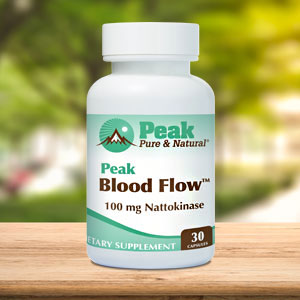Get Easy Health Digest™ in your inbox and don’t miss a thing when you subscribe today. Plus, get the free bonus report, Mother Nature’s Tips, Tricks and Remedies for Cholesterol, Blood Pressure & Blood Sugar as my way of saying welcome to the community!
The risk factors most strongly linked to severe stroke

You may think of a stroke as something that comes “out of the blue,” suddenly and without warning.
While it may seem that way, there are plenty of known factors that can lead to stroke.
The good news is that many of those conditions usually present themselves well in advance and can be modified often by lifestyle changes or medication.
Where should you start? Research from the University of Galway in Ireland has identified which conditions can contribute to severe stroke — and the single most important modifiable risk factor…
Types of stroke
First, a quick review of the differences among three types of stroke: ischemic, hemorrhagic, and transient ischemic attack, or TIA.
The vast majority of strokes are ischemic. The arteries that supply blood to the brain become blocked by a clot or severe narrowing of an artery. Plaque can break off the walls of a blood vessel and can also cause a blockage.
Hemorrhagic stroke, as the name implies, happens when an artery in the brain breaks open or leaks blood. The blood from that artery creates excess pressure in the skull and swells the brain, causing damage to brain cells and tissues.
A transient ischemic attack (often called a “mini-stroke”) is a temporary interruption of blood flow to the brain caused by a blood clot. Though TIAs can resolve on their own, usually with no permanent damage, it’s critical to seek immediate medical care when one strikes. A TIA is a warning sign that a full stroke may be imminent.
Risk factors for severe stroke
The Galway study has pinpointed the risk factors that not only carry a higher stroke risk but may also lead to more severe strokes.
They defined severe stroke as having outcomes ranging from being unable to walk or care for oneself without assistance to requiring constant nursing care to death.
A mild or moderate stroke was defined as having less severe outcomes, such as having no symptoms or requiring some help with personal care, but being able to walk without the assistance of another person.
The research started with 26,948 people from 32 countries with an average age of 62, of whom half suffered a stroke.
Researchers compared how important risk factors were for severe stroke and mild to moderate stroke to people who did not have a stroke.
They also compared how important risk factors were in those with stroke only, where people with a severe stroke were matched with and compared to people with a mild to severe stroke.
They found that:
- 74% of those with severe stroke had high blood pressure, compared to 72% of those with mild to moderate stroke.
- 11% of those with severe stroke had atrial fibrillation compared to 9% of those with mild to moderate stroke.
- People who smoked were 1.9 times more likely to have severe stroke and 1.7 times more likely to have mild to moderate stroke than people who were not smokers.
- People with atrial fibrillation were 4.7 times more likely to have severe stroke and 3.6 times more likely to have mild to moderate stroke than people without atrial fibrillation.
- After adjusting for age, sex, country and type of stroke, researchers found people with high blood pressure were 3.2 times more likely to have a severe stroke and 2.9 times more likely to have a mild to moderate stroke than people without high blood pressure.
- They also found people with atrial fibrillation were 4.7 times more likely to have severe stroke and 3.6 times more likely to have mild to moderate stroke than people without atrial fibrillation.
So, what’s under your control?
It should be clear from the data above that high blood pressure is the number one risk factor for stroke, followed closely by atrial fibrillation and smoking.
And according to study author Catriona Reddin, MD at the University of Galway in Ireland and a member of the American Academy of Neurology “Our findings emphasize the importance of controlling high blood pressure, which is the most important modifiable risk factor for stroke globally.”
But these three are often intertwined. According to the American Heart Association, high blood pressure is a huge risk factor for atrial fibrillation. And of course, we know that smoking leads to high blood pressure.
So, we’ve got the beginnings of a stroke-avoidance plan here.
- Don’t smoke. If you do, get help quitting.
- See a doctor regularly to have your blood pressure checked, and consider a quality at-home monitor to track it outside of doctor appointments.
- Take steps to keep your blood pressure in a consistently healthy range.
Start here, and you’ll be ahead of the game when it comes to avoiding a stroke.
Editor’s note: What do you really know about stroke? The truth is, only 10% of stroke survivors recover almost completely, and all doctors can offer is what to do after a stroke occurs. That’s unacceptable considering 80% of strokes are preventable! Click here to discover how to escape The Stroke Syndrome: 5 Signs it’s Stalking You — Plus the Hidden Causes and Preventive Measures You’ve Never Heard About!
Sources:
Which risk factors are linked to having a severe stroke? — Science Daily
Association of Vascular Risk With Severe vs Non-Severe Stroke — Neurology
High blood pressure, atrial fibrillation and your risk of stroke — heart.org














